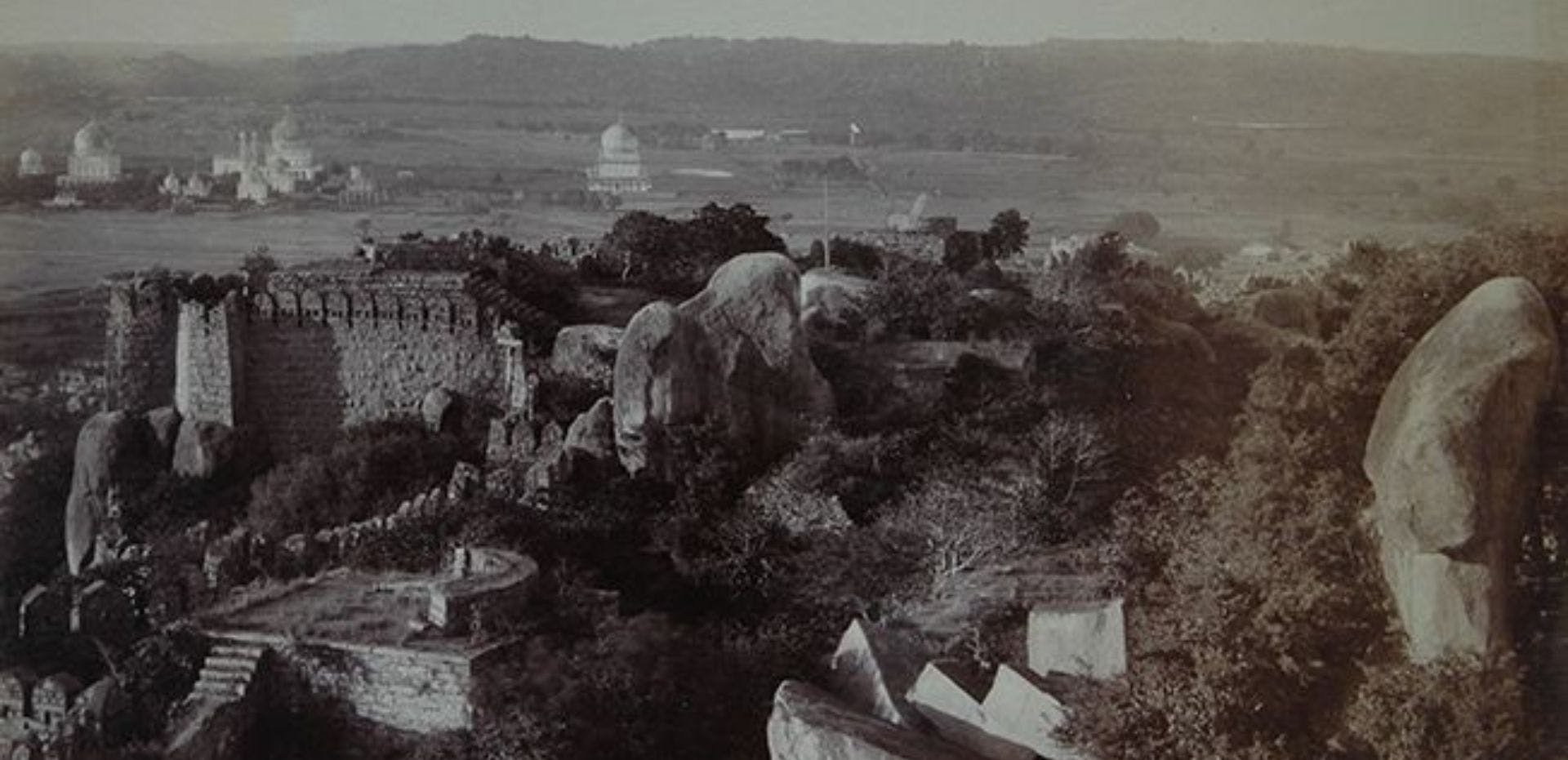The Nizam’s Hyderabad
BOOKMARK
These images of a bygone era are taken from an album compilation 'Views of HH the Nizam's Dominions, Hyderabad, Deccan, by the photographer Lala Deen Dayal in 1892’.
These photographs capture the fabulous architectural wealth created by the Nizams of Hyderabad, who were at this point, among the most powerful royals of India
The Nizams belonged to the Asaf Jah dynasty founded in 1748 CE by Asaf Jah I Qamar-ud-din Khan. He was appointed as the subedar of the Deccan by the Mughals and subsequently, he established independent rule. The Nizams of Hyderabad ruled their well spread kingdom, till India became a Republic in 1950 .
The Falaknuma Palace or Castle as it was originally called was one of the most lavish private homes in the city when it was constructed. With imported Italian marble, glittering chandeliers and an eclectic collection of art from Europe and the Far East, this Indo-Sarcenic building hosted important guests like the future King George V and Queen Mary who stayed in this beautiful palace.
The opulent Bashir Bagh Palace was constructed by Sir Asman Jah, a Paigah noble. The Paigah were a wealthy nobility in the service of the Nizams of Hyderabad and were aristocrats in their own right, with their own court, beautiful palaces and their own troops. Sir Asman Jah was the Prime Minister from 1887-1893 CE. He was married to the daughter of the Fifth Nizam.
The Afzal Mahal is the largest of the four individual palaces that make up the Chowmahalla complex in Hyderabad. The Nizam Mahboob Ali Khan would often entertain important dignitaries and guests who came from abroad in this European style palace filled with imported furniture, stunning chandeliers and decorative art.
The Charminar is Hyderabad’s most famous landmark and in this vintage image we see the Mecca Masjid on the far right. In the foreground are the crossroads that terminate at the main gates or kamans of the old city. These streets formed the stone arcaded historic bazar called patthergatti famed for its trade in pearls, diamonds and other wares.
The Purana Pul is believed to be Hyderabad’s oldest bridge over the River Musi. The photographer captures a busy streetscape of over a hundred years ago – men and women go about their work even as bullock carts bring in people to the city.
The Nizams of Hyderabad were progressive and among the first to introduce their own railway system in their state. The Nizam's Guaranteed State Railway commenced in 1879 CE and quickly served its role in enabling the development of industry. The royals made it point to receive important guests at the station.
This beautiful and compact mosque was built by Sultan Muhammad Qutub Shah’s daughter Khairunisa Begum in 1626 CE. She built it for her tutor Akhund Mulla Abul Malik, but he died on his Haj pilgrimage, and so the tomb adjoining the mosque remains without a grave.
The Hussain Sagar is a man made lake built by the Ibrahim Quli Qutub in 1563 CE and divides the cities of Hyderabad and Secunderabad. It provided water to the twin cities and this photo is taken from Saifabad.
Photograph of the James Street in Secunderabad, the twin city of Hyderabad, established as a result of an agreement between the Nizam and the British East India Company. The cantonment town of Secunderabad, named after Nizam Sikander Jah teemed with military troops, photographic studios, foreign settlers and many new institutions with modern buildings.
One half of a panoramic view, this stunning view was taken from Bala Hisar, atop the Golconda Fort. It shows the vast expanse of the landscape and the tombs of the Qutb Shahi kings in the distance. The walled fortress of Golconda traces it origins back to the 13th and 14th centuries CE and was known most famously for its prized diamonds.
– AUTHOR
Deepthi Sasidharan works and writes on 19th century photography. A Fulbright and Fundacao Oriente scholar, she is a trained museologist and currently works with Eka Archiving Services, planning museum and cultural projects from inception to execution.









